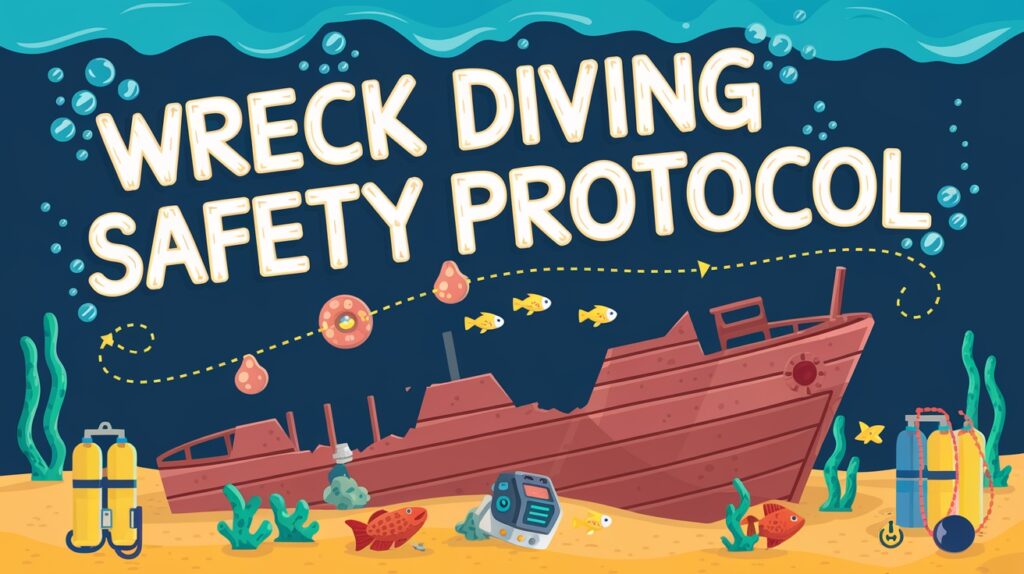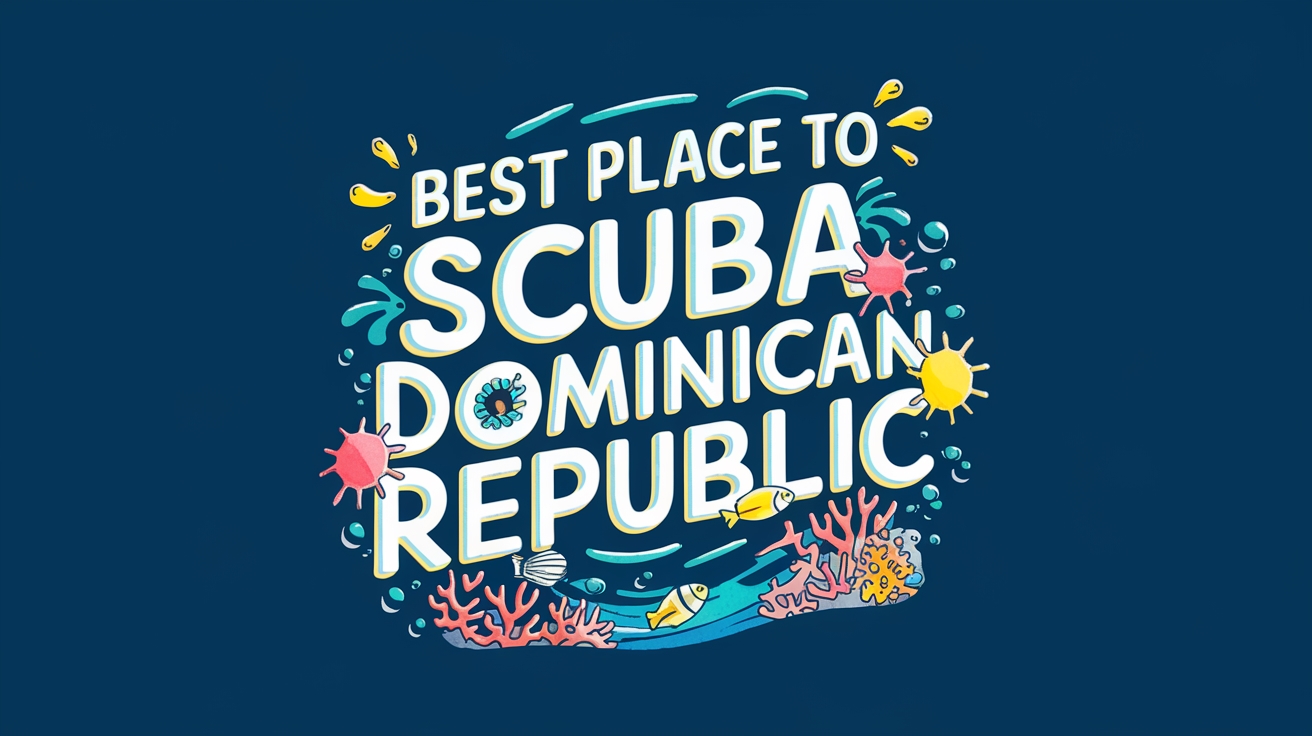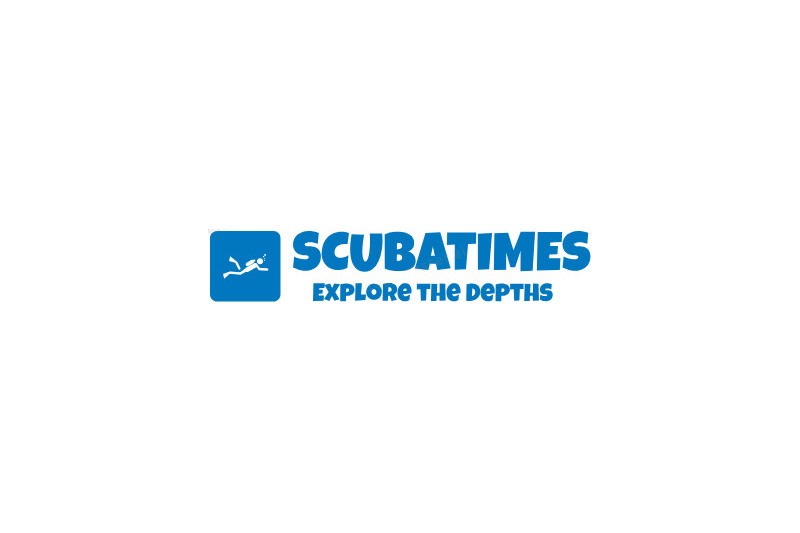Wreck exploration presents unique hazards that demand specific safety protocols. Divers must contend with overhead environments, potential entanglements, and limited visibility situations that can quickly escalate into emergencies. Proper training, equipment redundancy, and methodical planning form the foundation of safe wreck exploration. Even experienced divers can become disoriented or trapped when proper procedures are neglected. The consequences of overlooking established safety measures range from minor incidents to fatal accidents—a reality that underscores the importance of what follows.
Key Takeaways
- Always maintain proper certification in advanced wreck diving and complete thorough pre-dive planning for each specific wreck site.
- Carry essential safety equipment including redundant air sources, multiple cutting tools, and reliable guideline systems for navigation.
- Master perfect neutral buoyancy control and non-silting propulsion techniques to prevent visibility loss in fragile wreck environments.
- Implement strict gas management with 50-100% reserve requirements and continuous monitoring during penetration dives.
- Establish clear team communication protocols with standardized light signals and regular buddy checks every 15-20 seconds.

Wreck Diving Safety Protocol
Establishing detailed safety protocols remains paramount for all wreck diving operations, regardless of experience level or wreck condition. The foundation begins with proper certification in advanced wreck diving techniques, extensive dive planning, and meticulous equipment verification.
Successful protocols integrate multilayered contingency management, emphasizing buoyancy control and non-silting propulsion to maintain visibility in confined environments. Safety equipment requirements include redundant air sources, cutting tools, and reliable reel systems for penetration navigation. Divers must carefully avoid disturbing accumulated sediment to prevent dangerous silt out conditions that can lead to complete loss of visibility.
Pre-dive preparations must include environmental assessment for currents and structural hazards, while post-dive protocols require detailed debriefing and equipment maintenance. The buddy system remains vital, with clear communication procedures established for zero-visibility scenarios and emergency exits. Conservative gas management calculations should account for unexpected consumption increases during penetration diving.
Understanding Key Hazards in Wreck Environments
Wreck environments present distinct hazards that require meticulous preparation and specialized techniques for safe exploration. Silting occurs when fin movements disturb fine sediment, potentially reducing visibility to zero within seconds, while entrapment risks arise from narrow passages, debris, and unstable components that can restrict egress routes. Structural integrity assessment is critical as corroded bulkheads, weakened decks, and deteriorating hulls may collapse under minimal disturbance, particularly in vessels that have experienced prolonged exposure to marine elements. Divers should be especially cautious of sharp metal edges that can damage equipment and cause injuries during wreck exploration.
Silting Dangers Explained
Visibility, the swimmer’s primary sensory advantage, can vanish in seconds when encountering silt-out conditions in wreck environments. Silt composition analysis reveals suspended particulate matter—clay, mud, and decomposed organic material—that remains neutrally buoyant in still water. When disturbed by improper finning techniques, exhaled bubbles, or equipment wash, these particles create impenetrable visual barriers.
The resulting visibility challenges create cascading hazards: buddy separation, disorientation, potential collisions with sharp obstacles, and unplanned pressure changes during panic responses. Particularly dangerous are overhead environments where silt clouds remain trapped without natural dispersal mechanisms. Mitigation requires specialized training in non-silting propulsion methods like the Frog Kick, proper guideline protocols, and blackout mask drills that simulate zero-visibility navigation. Surface supplied divers face additional risks from umbilical snagging in poor visibility conditions. These skills transform potentially life-threatening scenarios into manageable situations through proper technique and preparation.
Entrapment Risk Assessment
Entrapment hazards represent a distinct category of risk that compounds the visibility challenges previously discussed. Wreck environments contain multiple entrapment scenarios including fishing gear, structural debris, and overhead spaces—particularly in wrecks below 40m where mortality risk increases 3.5-fold. Specialized wreck diving courses teach divers how to navigate these dangerous environments safely with proper techniques and equipment.
| Entrapment Type | Primary Risk | Mitigation |
|---|---|---|
| Fishing Gear | Line/net entanglement | Cutting devices, guideline use |
| Structural | Debris, collapsed sections | Proper training, buoyancy control |
| Overhead | Disorientation, gas limitations | Rule-of-thirds gas management |
Effective rescue protocols integrate equipment strategies (cutting tools, redundant lights) with operational practices (buddy system, guideline deployment). Divers should evaluate site-specific factors including current strength, visibility conditions, and team experience before attempting penetration explorations. Remote locations significantly complicate rescue operations, necessitating conservative planning and strict adherence to safety margins.
Structural Collapse Concerns
Beyond the risks of entanglement, structural deterioration presents one of the most unpredictable and potentially lethal hazards in wreck environments. Severe corrosion, environmental stressors, and prolonged submersion compromise the integrity of metallic frameworks, wooden components, and vital connection points.
Divers must recognize collapse indicators including corroded metal, rotting wood, and previously compromised sections. Physical contact, current forces, and equipment misuse can trigger catastrophic failures, resulting in entrapment or blocked exit routes. When combined with silt-out conditions, these situations often become life-threatening. Proper training in wreck diving courses helps divers identify these hazards before they become dangerous.
Effective structural assessments require pre-dive observational scans, guideline deployment, and constant vigilance for weak points. Specialized training teaches preventive measures like controlled movements and no-touch protocols—crucial safeguards that minimize the likelihood of initiating collapses while maintaining adequate escape options.
Essential Buoyancy and Trim Techniques
Achieving perfect neutral buoyancy represents the cornerstone of safe wreck exploration, enabling swimmers to hover motionless without disturbing fragile structures or silty environments. Maintaining a streamlined horizontal body position with slight head-down orientation prevents accidental ceiling contact and minimizes the risk of silt-out conditions in confined spaces. Swimmers must master incremental BC adjustments while employing relaxed breathing patterns, thereby maintaining stable depth control during complex penetration scenarios and emergency situations. Salt water environments common to many wreck sites require divers to adjust their weights specifically for water density factors, as the greater buoyancy in these conditions can significantly impact maneuverability around delicate wreck structures.
Perfect Neutral Buoyancy
The mastery of neutral buoyancy represents the cornerstone of safe wreck diving operations. Achieving this state requires precise buoyancy adjustments and proper weight distribution, established through detailed surface checks. Divers must balance descending weight against ascending forces, utilizing minimal BCD inflation while maintaining a horizontal position. Many divers significantly compromise their safety by wearing excess weight underwater.
| Technique | Application | Benefit |
|---|---|---|
| Breath Control | Minor adjustments | Prevents silt disturbance |
| Gradual BCD Venting | During ascent | Controls expansion effects |
| Extended Exhales | Near wreck surfaces | Facilitates precise positioning |
| Horizontal Trim | Throughout dive | Reduces drag and entanglement risk |
| Rhythmic Breathing | Hovering maneuvers | Stabilizes position without equipment adjustment |
Wreck environments demand exceptional buoyancy discipline. Divers should practice hovering exercises until adjustments become subconscious, prioritizing controlled movements and avoiding sudden BCD changes, particularly near overhead environments where entrapment risks exist.
Horizontal Body Position
Proper horizontal body position forms the foundation of effective wreck diving techniques, dramatically reducing entanglement risks while enabling precise navigation through confined spaces. Achieving ideal horizontal trim techniques requires alignment of shoulders, hips, and knees on a single plane, with the head maintained in a neutral position to prevent downward tilt.
Divers should adopt a posture similar to freefall parachuting, with a slight back arch providing stability. Equipment adjustments support neutral body positioning through higher tank placement and strategic trim weight distribution to counteract head-up tendencies. The frog kick and modified flutter kick maintain this position while minimizing silt disturbance. During transitions between vertical and horizontal orientations, controlled air purging preserves trim integrity. Regular practice with camera feedback improves proprioceptive awareness of proper alignment for wreck penetration scenarios. Extending the arms forward serves as an effective counterbalance to legs and helps maintain proper horizontal trim throughout the dive.
Navigating Tight Spaces and Overhead Environments
Maneuvering through confined spaces within shipwrecks presents unique challenges that require specialized training and equipment beyond standard open-water exploration techniques. Classification systems differentiate wreck environments based on complexity, allowing explorers to assess risks before penetration. These gradings determine appropriate wreck traversal techniques and necessary safety precautions.
Experienced wreck explorers employ overhead environment strategies including continuous guideline deployment, redundant light sources, and gas management rules of thirds or quarters. Restrictions are commonly classified from Basic to Extremely Severe based on whether divers can pass side-by-side or need equipment removal. The complexity of a restriction dictates equipment configuration—streamlined profiles prevent entanglement while specialized fins facilitate precise movements in silt-prone areas. Explorers must maintain situational awareness of potential exit points and recognize when a passage exceeds their certification level. Following standardized protocols reduces risks when maneuvering through the intricate corridors and compartments that characterize deteriorating maritime artifacts.
Equipment Selection and Redundancy Planning
Wreck explorers must equip powerful primary torches and multiple backup lights to combat the darkness and murky conditions within submerged structures. Redundant illumination systems prevent catastrophic navigational failure when exploring confined spaces where ambient light cannot penetrate. Crucial cutting tools, including line cutters and exploration knives, should be positioned for immediate access should entanglement in fishing lines, nets, or cables occur during exploration. For maximum safety in cold-water wreck environments, divers should wear a Fusion Bullet drysuit that combines mobility with durability while providing essential thermal protection.
Redundant Light Systems
Every wreck explorer must establish an extensive lighting strategy that incorporates multiple redundant systems to lessen the risk of total darkness—an often life-threatening condition in overhead environments. Modern light durability standards guarantee equipment can withstand underwater pressures and impacts, while lighting innovations provide options ranging from powerful primary torches to compact backup lights with signaling capabilities. Similar to pony cylinders, redundant light systems provide self-reliance and psychological security during emergency situations.
Explorers should implement a tiered approach with progressively smaller backup lights, each featuring independent power sources and activation mechanisms to prevent simultaneous failures.
- Primary lights should feature adjustable beam patterns for switching between wide-area search and focused navigation
- Secondary and tertiary lights must be instantly accessible through muscle memory in emergencies
- Pre-exploration function checks remain mandatory for all lights regardless of recent usage or battery status
Cutting Tools Selection
Selecting appropriate cutting tools represents a critical safety component for wreck explorers who face potential entanglement in fishing lines, cables, or debris. Experienced wreck swimmers carry at least two different cutting tool types, strategically positioning them on opposite sides of their equipment.
Medical shears offer one-handed precision cutting for thinner materials, while blunt knives provide sawing power for thicker ropes. Safety considerations should dictate placement accessibility. Top brands like Dive Rite, Scuba Max, and Hollis offer cutting tools recognized for their durability and performance in demanding underwater environments. Blade materials significantly impact performance—titanium resists corrosion in marine environments, while specialized steels like LC200N maintain edge retention in spite of saltwater exposure.
Serrated edges excel at cutting fibrous materials and webbing, whereas straight edges provide clean cuts on fishing lines. Regardless of selection, regular maintenance guarantees functionality when needed, as tool failure during entanglement could prove catastrophic.
Pre-Dive Site Assessment and Research
Before approaching any underwater wreck site, divers must conduct thorough research and assessment to identify critical safety factors that could impact immersion operations. Extensive site evaluation begins with wreck location analysis including depth profiling, current patterns, and marine life activity assessment. Submerge logistics must account for safe entry/exit points and environmental conditions that dictate appropriate timing. Divers should complete this site assessment before unpacking their gear to avoid unnecessary repacking if conditions prove unsuitable.
- Structural integrity assessment through historical documentation reveals potential hazards from deterioration, unstable sections, or confined spaces
- Environmental condition monitoring for visibility, temperature stratification, and tidal patterns optimizes submerge windows
- Equipment verification confirms technical readiness for specific wreck challenges including proper guideline systems and lighting redundancy
This methodical preparation framework lessens risks while maximizing exploration potential within established safety parameters.
Dealing With Silt-Outs and Zero Visibility Situations
When visibility suddenly deteriorates underwater, a swimmer’s survival depends on immediate, methodical response protocols. The first significant action is ceasing all movement to prevent further silt disturbance, followed by controlled breathing to manage panic while evaluating options.
Effective silt maneuvering requires pre-deployed guideline systems using wreck reels and maintaining continuous contact through the “OK grip” technique. Divers should prioritize tactile navigation over visual cues, maintaining buddy contact through touch signals when necessary. Stabilizing yourself and holding onto objects can prevent additional silt disturbance while waiting for conditions to improve.
Equipment redundancy—multiple lights, alternate air sources, and entanglement tools—provides vital backup during emergencies. Visibility techniques include proper fin movements (frog kick, pull-and-glide) that minimize sediment disturbance. Advanced training in zero-visibility scenarios using blackout masks develops important skills for maneuvering by touch and spatial awareness rather than sight.
Entanglement Prevention and Resolution
Adventurers examining wrecks face constant entanglement risks from fishing nets, monofilament line, cables, and interior debris that can quickly transform a routine plunge into a life-threatening emergency. Effective entanglement techniques emphasize prevention through streamlined gear configuration, strategic immersion planning, and continuous hazard awareness.
- Freeze motion immediately when encountering resistance, then methodically back out following the same path
- Position cutting tools near the waist for instant access, and always cut taut lines while maintaining buoyancy
- Establish clear buddy protocols with specific hand signals for entanglement situations
When implementing cutting strategies, divers should prioritize using EMT shears or safety knives on lines under tension while a buddy stabilizes their position. Equipment selection, particularly low-profile BCDs and secured accessories, significantly reduces entanglement vulnerability during penetration immersions. Divers should always evaluate wreck environments for potential snag hazards before entering to identify abandoned nets and sharp protrusions.
Gas Management Strategies for Wreck Penetration
Meticulous gas management forms the cornerstone of safe wreck penetration exploration, requiring underwater explorers to implement extensive planning systems that account for both routine consumption and emergency scenarios. Proper gas blend analysis guarantees appropriate mixtures for bottom, travel, and decompression phases while maintaining contingency reserves for unforeseen circumstances.
| Gas Type | Primary Function | Reserve Requirement |
|---|---|---|
| Bottom Mix | Maximum depth operations | 50-100% buffer |
| Travel Gas | Transition depth efficiency | Redundant supply |
| Deco Mix | Accelerated off-gassing | Independent system |
Depth specific protocols dictate when underwater explorers should switch between gas mixtures, with automated computer integration providing real-time consumption tracking. Post-dive debriefs compare actual usage against theoretical models, documenting near-misses to refine future underwater exploration planning. Equipment redundancy through proper labeling, isolation valves, and optimized configurations creates multiple safety layers for challenging penetration environments.
Team Communication and Buddy Protocols
Effective communication represents the vital connective tissue between immerse team members during wreck penetration, where ambient darkness, confined spaces, and complex environments demand flawless coordination. Technical wreck divers must establish clear pre-immersion protocols that define buddy roles, standardize hand signals, and outline emergency procedures before submersion occurs.
- Implement standardized light signals with circular “OK” motions and scheduled passive sweeps every 15-20 seconds to maintain communication clarity
- Designate specific buddy roles (reel diver, link diver, deco captain) with explicit responsibilities to prevent confusion during critical moments
- Rehearse emergency communication procedures including gas-sharing signals, entanglement responses, and contingency plans for guideline breaks
Successful wreck penetration requires maintaining unified team dynamics through disciplined adherence to communication protocols, ensuring each diver understands both their individual responsibilities and collective safety parameters.


